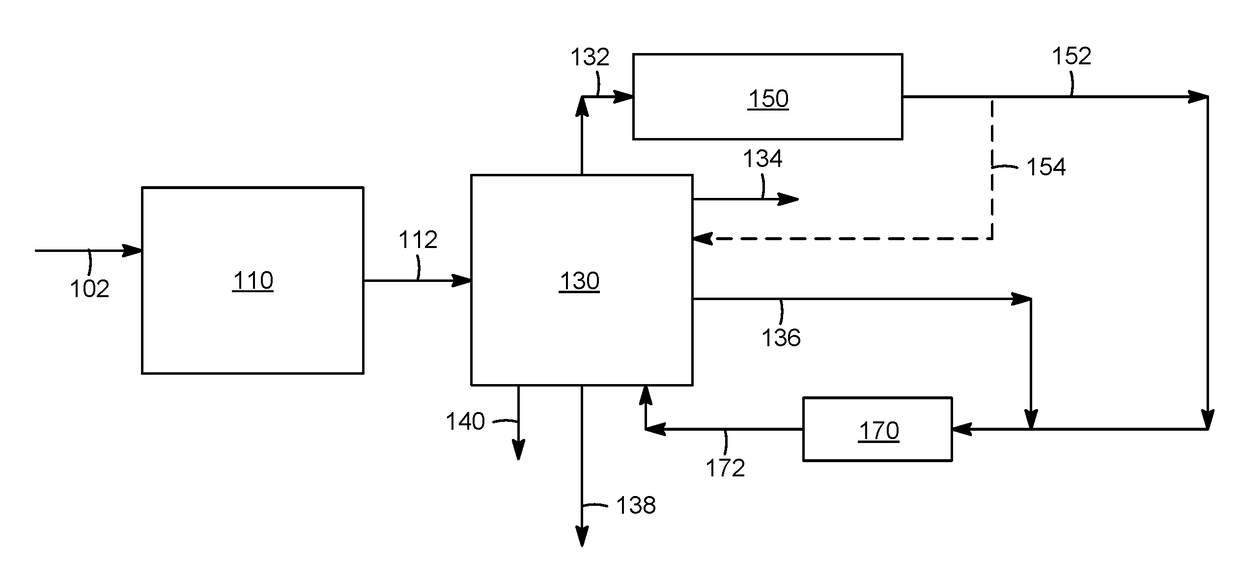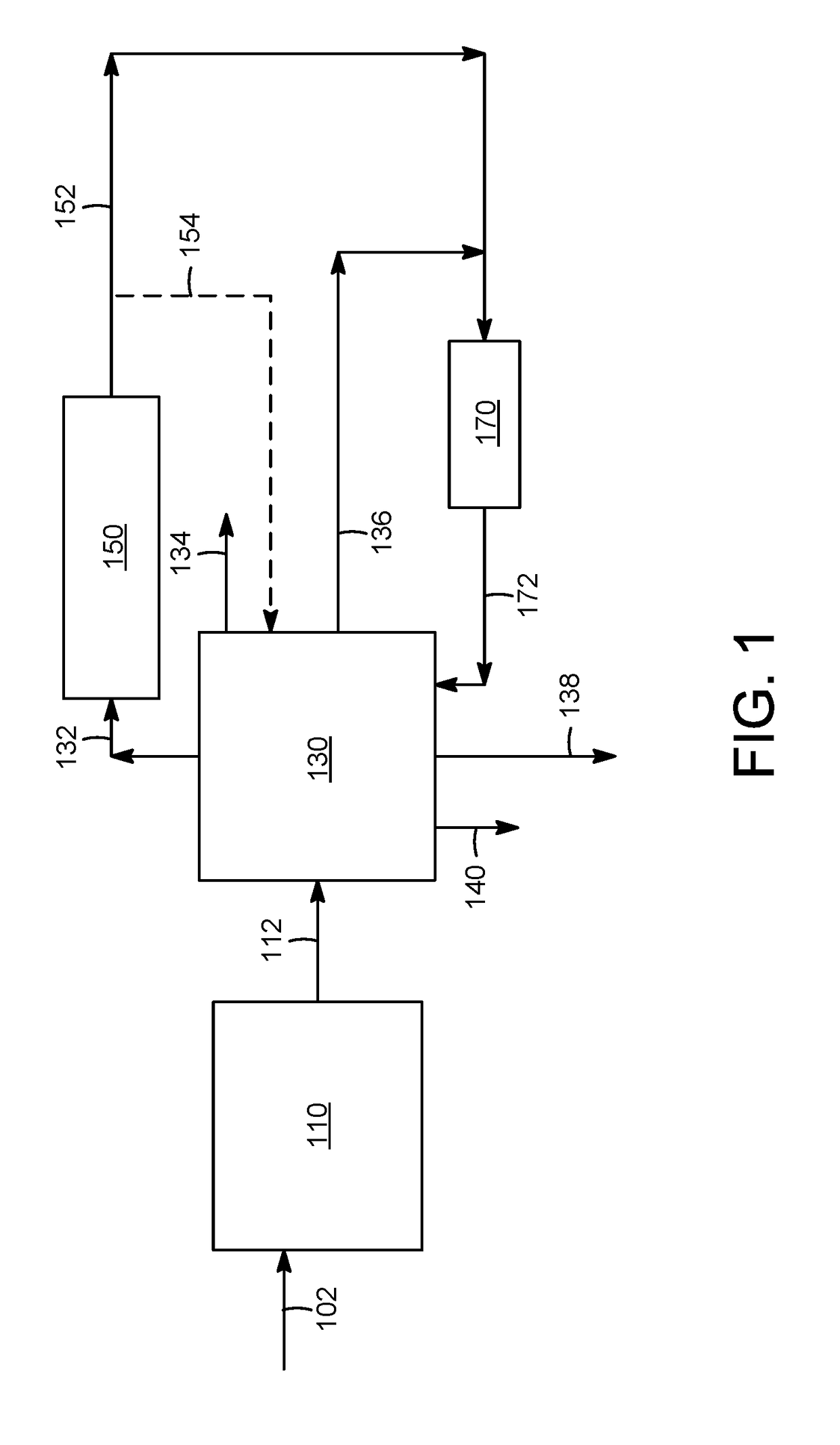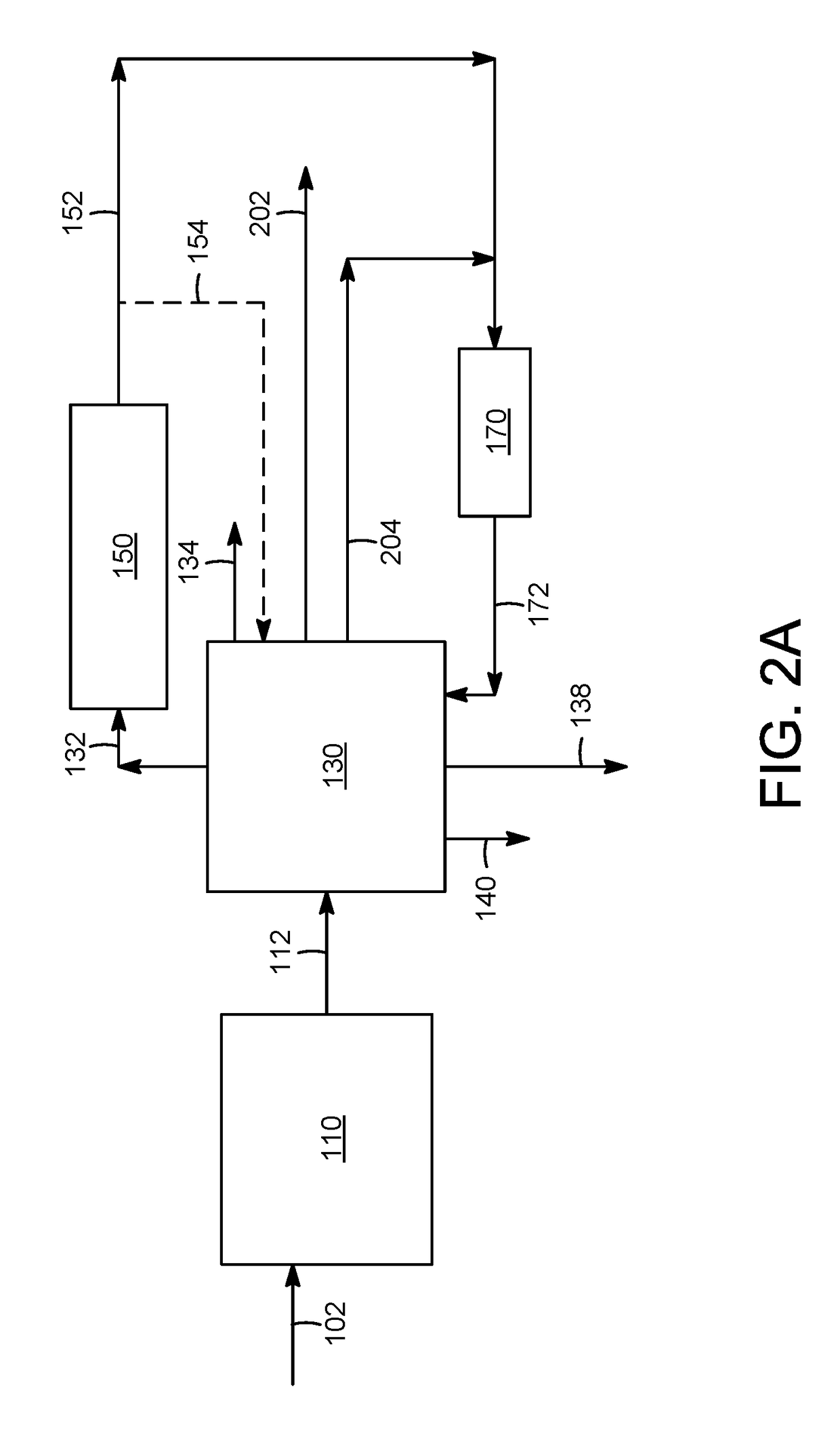Processes and apparatuses for production of polypropylene
- Summary
- Abstract
- Description
- Claims
- Application Information
AI Technical Summary
Benefits of technology
Problems solved by technology
Method used
Image
Examples
specific embodiments
[0048]While the following is described in conjunction with specific embodiments, it will be understood that this description is intended to illustrate and not limit the scope of the preceding description and the appended claims.
[0049]A first embodiment of the invention is a process for the production of propylene from an oxygenate feed, comprising passing the oxygenate feed to an oxygenate-to-olefin reactor to contact the oxygenate feed with a catalyst comprising a silicoaluminophosphate (SAPO) to provide an effluent stream comprising light olefins comprising ethylene, propylene and butylene; separating the effluent stream in a product separation zone to generate a propylene product stream, an ethylene stream and a C4+ stream; reacting the ethylene stream in an ethylene dimerization or oligomerization reactor in presence of a dimerization or oligomerization catalyst to provide a first process stream; cracking the C4+ stream and the first process stream in a cracking reactor under cr...
PUM
| Property | Measurement | Unit |
|---|---|---|
| Temperature | aaaaa | aaaaa |
| Temperature | aaaaa | aaaaa |
| Fraction | aaaaa | aaaaa |
Abstract
Description
Claims
Application Information
 Login to View More
Login to View More - R&D Engineer
- R&D Manager
- IP Professional
- Industry Leading Data Capabilities
- Powerful AI technology
- Patent DNA Extraction
Browse by: Latest US Patents, China's latest patents, Technical Efficacy Thesaurus, Application Domain, Technology Topic, Popular Technical Reports.
© 2024 PatSnap. All rights reserved.Legal|Privacy policy|Modern Slavery Act Transparency Statement|Sitemap|About US| Contact US: help@patsnap.com










